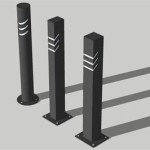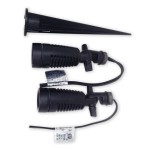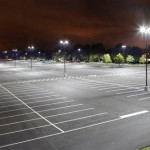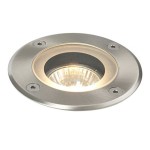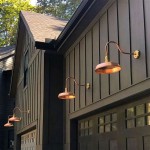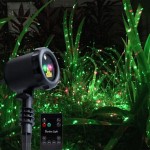Outdoor Light Control Panel: Essential Aspects to Consider
Outdoor light control panels play a crucial role in managing outdoor lighting systems, providing convenience, security, and energy efficiency. These panels serve as central hubs for controlling multiple lighting fixtures, allowing for easy customization and automation of lighting schedules.
Components and Functionality
An outdoor light control panel typically consists of several key components:
- Timer Function: This feature enables programmable on/off schedules for connected lighting fixtures, ensuring they operate according to specific time frames.
- Photocell Sensor: A photocell sensor detects ambient light levels, automatically turning lights on at dusk and off at dawn.
- Motion Sensor Input: If integrated, motion sensors can trigger lights to activate based on detected movement, providing additional security and convenience.
- Control Buttons: The panel usually includes buttons for manual override, enabling immediate control of connected lights.
Benefits of Outdoor Light Control Panels
Outdoor light control panels offer numerous advantages:
- Convenience: Automated schedules eliminate the need for manual switching, ensuring lights are always on when needed and off when not.
- Security: Motion sensor integration provides increased security by illuminating areas when movement is detected, deterring potential intruders.
- Energy Efficiency: Schedules and photocell sensors help reduce energy consumption by only operating lights when necessary, minimizing energy waste.
- Improved Aesthetics: Automated lighting adds curb appeal, creating a welcoming and inviting outdoor environment.
Factors to Consider When Choosing a Panel
Several factors should be considered when selecting an outdoor light control panel:
- Number of Circuits: Determine the number of lighting fixtures or circuits to be controlled by the panel.
- Automation Features: Choose a panel with the desired automation features, such as built-in timers, photocell sensor, and motion sensor input.
- Mounting Location: Consider the intended location of the panel and choose one that is appropriate for the environment.
- Ingress Protection Rating (IP Rating): Select a panel with an appropriate IP rating for outdoor use, ensuring resistance to water, dust, and other elements.
Proper Installation and Maintenance
For optimal performance and longevity, proper installation and maintenance of the outdoor light control panel are essential:
- Installation: Seek professional assistance if necessary to ensure proper wiring and connections.
- Regular Inspection: Regularly check the panel and connected lighting fixtures for any signs of wear or damage.
- Cleaning: Keep the panel clean and free of debris to prevent malfunction.
- Battery Replacement: If the panel uses batteries, ensure they are replaced promptly when low battery indicators are triggered.
By following these guidelines and choosing the right outdoor light control panel for your specific requirements, you can enhance the convenience, security, and energy efficiency of your outdoor lighting system, creating a safer and more inviting outdoor environment.

File Outdoor Lighting Control Panel Installation Jpg Wikimedia Commons

Hyun Jin Outdoor Light Control Panel Marine Ship

Zh 9602 K1 Heliport Outdoor Lighting Control Cabinet Controller Shehen Ruibu Tech Co Ltd

Introduction To Panel Based Control Systems

Automatic Light Controller Outdoor Panel Gelco Electronics Pvt Ltd

Three Phase 440 V Outdoor Street Light Control Panel 400a

Nature Switch Swadeep 02ec5kw3p Outdoor Lighting Switching Panel

Automatic Light Controller Outdoor Panel Gelco Electronics Pvt Ltd

Mrc Mop 001 Outdoor Light Control Panel

Hyun Jin Outdoor Light Control Panel Marine Ship
